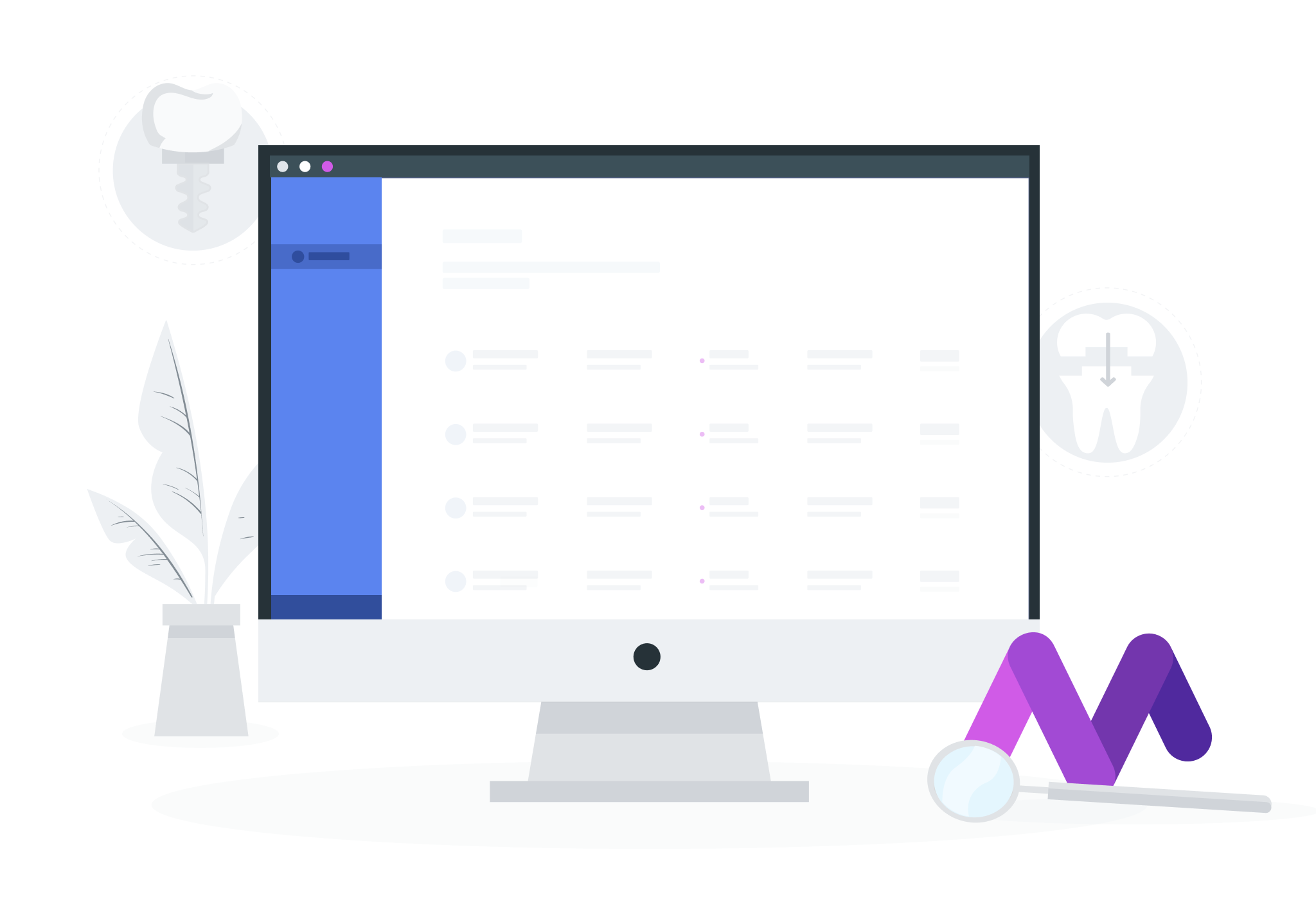
There aren’t too many repercussions if you run out of office supplies like pens or printer paper. Sure, it may be annoying to employees, especially the one who may need to run out to pick some up or has to place a rush order. However, running out of an item you need to service a patient, or worse yet, all your patients, brings much more harm to your practice. Stockouts can lower your productivity and efficiencies, increase your supply costs with rush orders and expediting costs, and, even more critically, hinder your ability to provide optimal patient care and bring harm to your reputation. Ultimately, stockouts decrease your revenue and profits, frustrate employees, damage the patient relationships you work hard to build, and threaten your practice’s growth and long-term viability.
Stockouts can happen for many different reasons. Factors such as underestimating your requirements, major shipment delays, and a lack of cash can all lead to a critical dental supply being out of stock. Here are some of the most common causes of stockouts:
The above list may seem lengthy. But the dental supply chain is a complicated one, and plenty can go wrong. Your supplier may be experiencing production delays due to raw material or labor shortages. Or maybe a hurricane stopped a shipment in its tracks. Although it may feel as if stockouts are inevitable and out of your control, there is plenty you can do to mitigate your risks and avoid stockouts. For some, it may start with a simple task such as creating an inventory list to help your employees manage the very long list of supplies you need. Read on for tips and tactics to avoid stockouts.
There are many strategies for avoiding stockouts. Which ones you use or prioritize will depend on your practice. First, we suggest you review the list we provide below and identify your gaps. Some of what we suggest you may already have in place. Second, it’s important to know where your most significant risks lay. We suggest you take some time to consider when you last dealt with a stockout and the reason behind it. You should also review your supplier’s service and delivery performance. This may help you prioritize implementing certain strategies over others. Lastly, prioritize your projects based on your availability of resources, the impact you’re looking to drive, any added benefits a certain tactic may bring as well as your overall business objectives. Finally, here are our tips and strategies for avoiding stockouts:

Lead time is the estimated time it will take a supplier to deliver your order once they’ve received it. It’s a critical piece of information you must consider when calculating when and how much to order, as well as the minimum amount of inventory you want to keep in stock. At a bare minimum, when placing orders, you’ll need to order enough stock to get you through until the next order can deliver. As lead times are estimated and may change, you’ll want to carry some safety stock to ensure you avoid stockouts.
Average lead times should also be a deciding factor when selecting your vendors. In order to minimize the amount of inventory you need to hold (and, therefore, the cash you need to lay out), you’ll want to select vendors with the shortest lead times while also considering the price, service levels, and all your other supplier selection criteria.
Short supplier lead times are also highly critical if you find yourself running low on inventory and need to expedite an order. As lead times can change, and sometimes quite drastically due to supply chain issues, it’s important to keep your eye on them. We suggest you ask your service rep to help monitor the lead times on the supplies you regularly purchase and give you a warning if they expect or know of an upcoming change.
A key part of lean inventory management, Just-in-Time (JIT), is an inventory technique that focuses on minimizing waste and optimizing cash flow by bringing in supplies and materials shortly before they’re needed for production. By reducing the time between when you pay for supplies and when you use them, you can safely maintain low stock levels without risking a stockout. JIT is achieved using mechanisms like reorder point, safety stock, and order quantity.
A reorder point is a pre-determined level of inventory that triggers a stock replenishment. Reorder points are calculated based on supplier lead times, the quantity you expect to use within that time, safety stock requirements, and the shelf life of the product. Similarly, reorder quantity is pre-determined and is the quantity needed to be ordered once you hit or fall below the reorder point. Setting an order quantity removes the guessing game from purchasing supplies, ensuring you order what makes the most financial sense for your practice.
Reorder quantities are calculated based on average lead times, typical usage quantities, safety stock requirements, and shelf life. Additionally, suppliers may offer a price break for a specific order volume and require you to order in entire case or box quantities. Therefore, these factors should be considered when establishing your order quantities.
As you may have guessed, safety stock acts as a safety net, providing you some buffer in case of shipment delays or an unexpected increase in usage. Here’s where it’s essential to know your supply chain and your supplies. The more you understand the risks within your supply chain and, therefore, the likelihood of experiencing a disruption or delay, the better you’ll be able to determine how much you should hold “just in case. "Here are some important things to consider when determining the best safety stock level for dental supplies:
You’ll also need to consider your ability to react in case of an issue. How long would it take you to source and order from a secondary supplier if there were to be an emergency? Make sure to include the time it would take you to find a supplier with stock, set up an account if necessary, their typical lead times, etc. Consistency of usage and where the item is used also matter. If a product is low-cost but critical to a majority of your services, your risks are minimal, and it's safe for you to carry a higher amount of safety stock, knowing it won’t take you long to use it up.
You'll want to be more prudent on your safety stock quantities for high-value items that are used more infrequently or come with an expiry date. For more on how to calculate your safety stocks, including a formula, click here.
They say history is a great determiner of the future. This holds true when it comes to the supplies you’ll need to run your practice. Your ability to forecast demand will depend on how you’ve managed and tracked your purchases. The more history you have on your purchases, the more you can identify patterns and better estimate your supply and budget requirements. However, don’t forget to take into account the following:
One, if not the, most critical step in avoiding stockouts is to monitor your shortages and investigate the reasons behind them. Although you’ll want to avoid fingerpointing, understanding the root cause of a stockout will allow you to take corrective actions like changing suppliers, carrying a backup option if a product is experiencing supply chain delays, or correcting any gaps in your inventory management processes.

To err is to be human. It’s understandable that your busy office staff may miss placing an order, order the wrong quantity, or even, given the similarity of many products and the lengthy SKUs used to identify them, order the wrong item. Without the proper system and processes, you could even be overpaying on invoices. As understandable as errors may be, these are costly mistakes that erode your profits, hurt your office efficiencies, and risk your patient care. By providing you with the tools, visibility, and data you need to streamline and automate effective inventory management processes, Method’s inventory management software will help you avoid stockouts while saving money and time.
Leveraging Method’s inventory management platform, you will:
Avoiding stockouts is essential to safeguarding your profitability and your growth. But things shouldn’t end there. Improving your profits is hard work but vital to your long-term viability and ability to scale. Method's inventory management platform delivers everything you need for a streamlined, effective, yet scalable process that makes life easier for your employees so they can remain focused on taking care of patients— all while reducing overhead costs.Ready to find out more? Contact us now to arrange a personalized demo.









